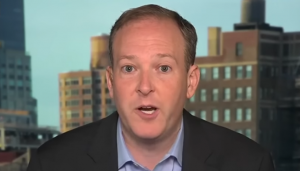Ruth Bader Ginsburg, US Supreme Court Justice and liberal icon, told her granddaughter earlier this week that her “most fervent wish is that I will not be replaced until a new president is installed.” She died on Friday at 87, just 46 days before an election in which President Donald Trump lags his Democratic rival Joe Biden in the polls.
Her death opens a crucial vacancy in the court expected to set off a pitched political battle at the peak of the presidential campaign. The vacancy offers the Republicans a chance to lock in a conservative majority at the court, tilting it to the right, potentially for decades, with media reporting that a new nominee could be quick. But it also has the potential to mobilize voters on the Democratic side against Trump and congressional Republicans come November. Trump had said in August that he would have no qualms about naming a new Justice so close to the election, and last week unveiled 20 names of possible choices, all deeply conservative.
Soon after Ginsburg’s death Senate Majority Leader Mitch McConnell vowed in a statement to bring to a vote whoever President Donald Trump nominates. “President Trump’s nominee will receive a vote on the floor of the United States Senate”, he said. Senate Majority Whip John Thune, the number two GOP senator, backed McConnell, saying in a statement of his own, “I believe Americans sent a Republican president and a Republican Senate to Washington to ensure we have an impartial judiciary that upholds the Constitution and the rule of law. We will fulfill our obligation to them.”
Joe Biden strongly disagreed, warning, “The voters should pick the president, and the president should pick the justice for the Senate to consider.” He also added, “this was the position the Republican Senate took in 2016 when they were almost 10 months to go before the election. That’s the position the United States Senate must take today.”
Biden was referring to Mitch McConnell’s decision in 2016, in President Barack Obama’s last year in office, to block Obama’s Supreme Court nominee Merrick Garland so that Trump could name his own the following year.
Ginsburg herself was acutely aware of the stakes of her health on the court balance, and her fans fretted at her increasingly frequent trips to the hospital over the past two years. She died after a fight with pancreatic cancer – her fourth battle with cancer – the court announced on Friday, saying she passed away “surrounded by her family at her home in Washington, DC.”
Trump was campaigning in Minnesota and was on stage at an election rally when the news of Justice Ginsburg’s death came in, and was informed by reporters after his speech. “She just died? Wow. I didn’t know that,” he said. “Whether you agreed or not, she was an amazing woman who led an amazing life.” He later issued a formal statement in her honor, praising her as a “titan of the law,” and the White House and Congress lowered flags to half-staff.
Republicans, who currently hold a 53-47 majority in the Senate, need 51 votes to confirm a new justice once one is formally nominated. It typically takes 2-3 months to select and process a nominee. If President Trump were to push forward with a nomination, the President and Senate might vote to confirm the nominee after the November elections, in a so-called lame duck session after the election but before the new President and Senate formally take on their responsibilties in January. Currently President Trump trails in most presidential election opinion polls, including the recent one by Reuters (45-55). Polls are inconclusive on whether or not Republicans will lose the senate. This might create a scenario where a Republican Senate and a Republican president confirm the Supreme Court replacement for Justice Ginsburg after they have lost the election before the new president and senate are sworn in.
Trump gave no indication whether he intended to press ahead with a nomination.






